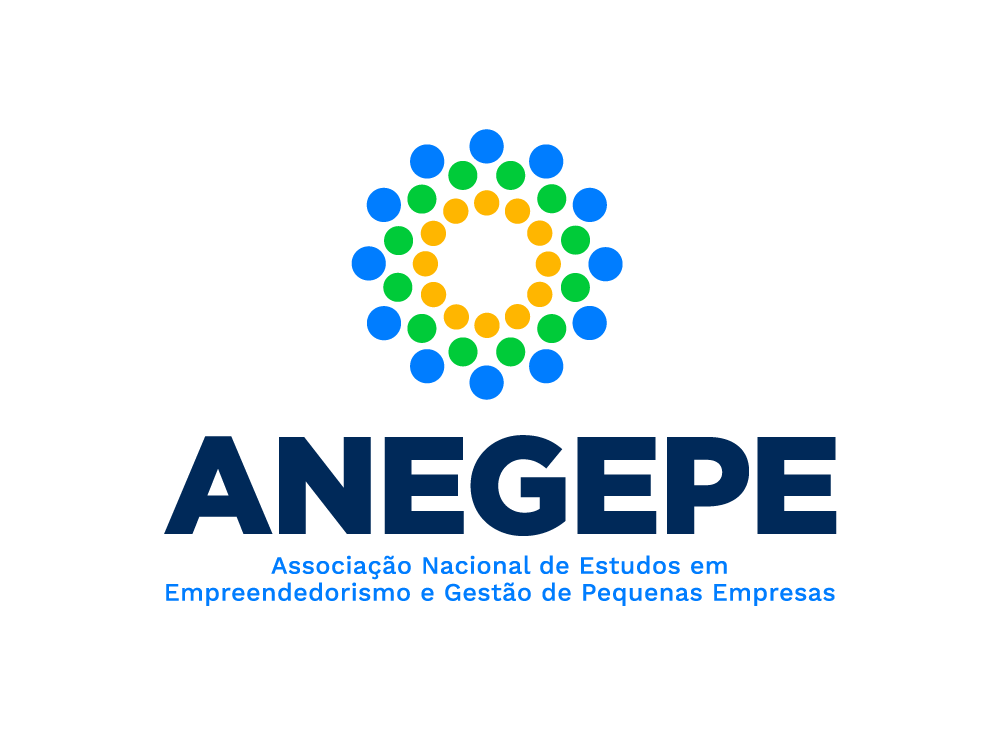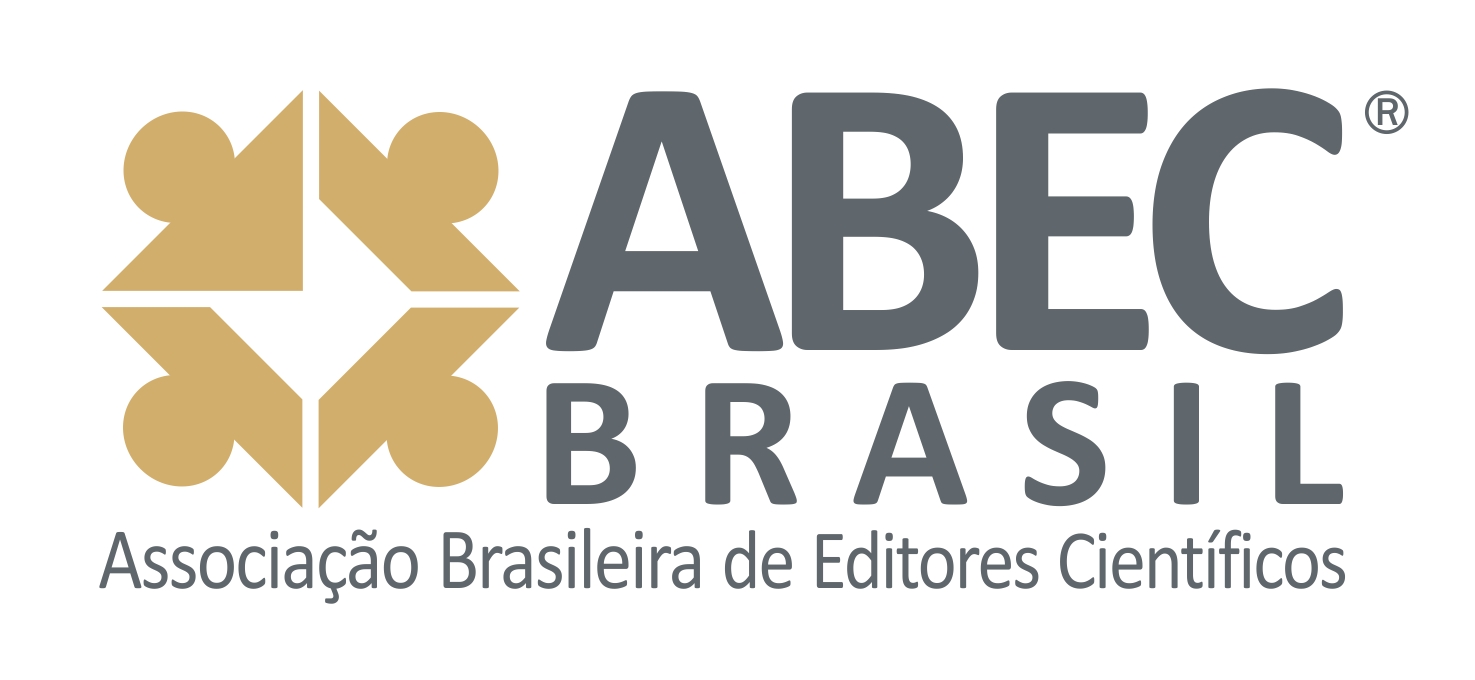Revelando o papel das capacidades frugais e digitais no financiamento de startups de deep tech
DOI:
10.14211/regepe.esbj.e2467Palavras-chave:
Startups deep tech, Investimentos, Inovação frugal, Tecnologias digitaisResumo
Objetivo: Demonstrar o Papel das Tecnologias Digitais, Inovação Frugal e Atributos de Imitabilidade na Atração de Investimentos em Startups de Deep Tech em uma Economia Emergente. Metodologia/abordagem: Os dados primários para esta pesquisa foram obtidos de uma amostra de 216 startups de deep tech de vários setores, localizadas em São Paulo. As hipóteses foram testadas utilizando modelagem de equações estruturais através do método Partial Least Squares (PLS-SEM). Principais resultados: Investidores privados são atraídos por tecnologias digitais e pelo atributo de ser difícil de imitar. No entanto, embora exista uma associação positiva entre a capacidade de inovação frugal e o atributo difícil de imitar, não foram identificados efeitos indiretos dessa capacidade sobre os investimentos. Contribuições teóricas/metodológicas: Focando em economias emergentes, este estudo contribui para a literatura que investiga quais fatores explicam os investimentos em startups de deep tech. Além disso, contribui para a literatura que liga a inovação frugal e a complexidade tecnológica. Relevância/originalidade: Startups de deep tech requerem recursos financeiros substanciais; no entanto, em mercados emergentes, há escassez de recursos de investimento. Baseado na Visão Baseada em Recursos (RBV), esta pesquisa demonstra quais capacidades são capazes de despertar o interesse de investidores privados no contexto de economias emergentes. Contribuições sociais/gerenciais: Para empreendedores, a pesquisa destaca a importância das tecnologias digitais na atração de investimentos. Para investidores e formuladores de políticas públicas, o estudo enfatiza a associação da capacidade de inovação frugal com o atributo de imitabilidade em startups de deep tech.
Downloads
Referências
AlNuaimi, B. K., Khan, M., & Ajmal, M. M. (2021). The role of big data analytics capabilities in greening e-procurement: A higher order PLS-SEM analysis. Technological Forecasting and Social Change, 169, 120808. https://doi.org/10.1016/j.techfore.2021.120808
Aranda-Usón, A., Portillo-Tarragona, P., Marín-Vinuesa, L. M., & Scarpellini, S. (2019). Financial resources for the circular economy: A perspective from businesses. Sustainability, 11(3), 888. https://doi.org/10.3390/su11030888
Asakawa, K., Cuervo-Cazurra, A., & Un, C. A. (2019). Frugality-based advantage. Long Range Planning, 52(4), 101879. https://doi.org/10.1016/j.lrp.2019.04.001
Barney, J. (1991). Firm resources and sustained competitive advantage. Journal of Management, 17(1), 99–120. https://doi.org/10.1177/014920639101700108
Barnikol, J., & Liefner, I. (2022). The prospects of advanced frugal innovations in different economies. Technology in Society, 71, 102081. https://doi.org/10.1016/j.techsoc.2022.102081
Baum, J. A., & Silverman, B. S. (2004). Picking winners or building them? Alliance, intellectual, and human capital as selection criteria in venture financing and performance of biotechnology startups. Journal of Business Venturing, 19(3), 411–436. https://doi.org/10.1016/s0883-9026(03)00038-7
Bedi, H. S., & Vij, S. (2016). Antecedents and consequences of frugal innovation: A conceptual model. In K. Ghuman, A. Sharma, & A. Garg (Eds.), Indian management: Proceeding of International Conference on Indian Management (pp. 253–269). Thapar University
Blank, S. (2013). Why the lean start-up changes everything. Harvard Business Review, 91(5), 63-72.
Cai, Q., Ying, Y., Yang, L., & Wei, W. (2019). Innovating with limited resources: the antecedents and consequences of frugal innovation. Sustainability, 11(20), 5789. https://doi.org/10.3390/su11205789
Chanias, S., Myers, M. D., & Hess, T. (2019). Digital transformation strategy making in pre-digital organizations: The case of a financial services provider. The Journal of Strategic Information Systems, 28(1), 17–33. https://doi.org/10.1016/j.jsis.2018.11.003
Chaturvedi, S. (2015). So, what exactly is “deep technology”? LinkedIn.
Chin, W. W. (1998). The partial least squares approach to structural equation modeling. Modern methods for business research, 295(2), 295-336.
Cockburn, I. M., & MacGarvie, M. J. (2009). Patents, thickets and the financing of early‐stage firms: Evidence from the software industry. Journal of Economics & Management Strategy, 18(3), 729–773. https://doi.org/10.1111/j.1530-9134.2009.00228.x.
Cohen, J. (1988). Statistical power analysis for the behavioral sciences (2nd ed.), Erlbaum.
Cuevas-Vargas, H., Camarena, J. L., & Velázquez-Espinoza, N. (2022). Sustainability performance as a result of frugal innovation: The moderating effect of firm size. Procedia Computer Science, 214, 141–148. https://doi.org/10.1016/j.procs.2022.11.159
De la Tour, A., Portincaso, M., Goeldel, N., Chaudhry, U., Tallec, C., & Gourévitch, A. (2021). Deep tech: The great wave of innovation. Boston Consulting Group & Hello Tomorrow SES. https://hello-tomorrow.org/deep-tech-the-great-wave-of-innovation/
Doblinger, C., Surana, K., & Anadon, L. D. (2019). Governments as partners: The role of alliances in US cleantech startup innovation. Research Policy, 48(6), 1458–1475. https://doi.org/10.1016/j.respol.2019.02.006
Dubey, R., Gunasekaran, A., Childe, S. J., Roubaud, D., Wamba, S. F., Giannakis, M., & Foropon, C. (2019). Big data analytics and organizational culture as complements to swift trust and collaborative performance in the humanitarian supply chain. International Journal of Production Economics, 210, 120–136. https://doi.org/10.1016/j.ijpe.2019.01.023
Fischer, B., Guerrero, M., Guimón, J., & Schaeffer, P. R. (2021). Knowledge transfer for frugal innovation: Where do entrepreneurial universities stand? Journal of Knowledge Management, 25(2), 360–379. https://doi.org/10.1108/jkm-01-2020-0040
Frank, A. G., Mendes, G. H., Ayala, N. F., & Ghezzi, A. (2019). Servitization and Industry 4.0 convergence in the digital transformation of product firms: A business model innovation perspective. Technological Forecasting and Social Change, 141, 341–351. https://doi.org/10.1016/j.techfore.2019.01.014
Gigler, S., & McDonagh, B. (2018). Financing the deep tech revolution: How investors assess risks in key enabling technologies. European Investment Bank. https://www.eib.org/attachments/pj/study_on_financing_the_deep_tech_revolution_en.pdf
Hair, J. F., Howard, M. C., & Nitzl, C. (2020). Assessing measurement model quality in PLS-SEM using confirmatory composite analysis. Journal of Business Research, 109, 101–110. https://doi.org/10.1016/j.jbusres.2019.11.069
Hair, J., & Alamer, A. (2022). Partial least squares structural equation modeling (PLS-SEM) in second language and education research: Guidelines using an applied example. Research Methods in Applied Linguistics, 1(3), 100027. https://doi.org/10.1016/j.rmal.2022.100027
Hegeman, P. D., & Sørheim, R. (2021). Why do they do it? Corporate venture capital investments in cleantech startups. Journal of Cleaner Production, 294, 126315. https://doi.org/10.1016/j.jclepro.2021.126315
Helfat, C. E., & Peteraf, M. A. (2003). The dynamic resource‐based view: Capability lifecycles. Strategic Management Journal, 24(10), 997–1010. https://doi.org/10.1002/smj.332
Hidayat, S. E., Bamahriz, O., Hidayati, N., Sari, C. A., & Dewandaru, G. (2022). Value drivers of startup valuation from venture capital equity-based investing: A global analysis with a focus on technological factors. Borsa Istanbul Review, 22(4), 653-667. https://doi.org/10.1016/j.bir.2021.10.001
Hoenig, D., & Henkel, J. (2015). Quality signals? The role of patents, alliances, and team experience in venture capital financing. Research Policy, 44(5), 1049–1064. https://doi.org/10.1016/j.respol.2014.11.011
Hsu, D. H., & Ziedonis, R. H. (2013). Resources as dual sources of advantage: Implications for valuing entrepreneurial‐firm patents. Strategic Management Journal, 34(7), 761–781. https://doi.org/10.1002/smj.2037
Huayamares, S. G., Lokugamage, M. P., Sanchez, A. J. D. S., & Dahlman, J. E. (2022). A systematic analysis of biotech startups that went public in the first half of 2021. Current Research in Biotechnology, 4, 392–401. https://doi.org/10.1016/j.crbiot.2022.09.004
Johnson, D. K., & Wagoner, P. V. (2021). The chicken or the egg: Causality between trade and innovation. Journal of Industry, Competition and Trade, 21, 527–541. https://doi.org/10.1007/s10842-021-00366-4
Karim, M. S., Nahar, S., & Demirbag, M. (2022). Resource-based perspective on ICT use and firm performance: A meta-analysis investigating the moderating role of cross-country ICT development status. Technological Forecasting and Social Change, 179, 121626. https://doi.org/10.1016/j.techfore.2022.121626
Kriz, A., Rumyantseva, M., & Welch, C. (2022). How science-based start-ups and their entrepreneurial ecosystems co-evolve: A process study. Industrial Marketing Management, 105, 439–452. https://doi.org/10.1016/j.indmarman.2022.06.011
Lange, D. E. (2017). Start-up sustainability: An insurmountable cost or a life-giving investment? Journal of Cleaner Production, 156, 838-854. https://doi.org/10.1016/j.jclepro.2017.04.108
Lefebvre, V., Certhoux, G., & Radu-Lefebvre, M. (2022). Sustaining trust to cross the Valley of Death: A retrospective study of business angels’ investment and reinvestment decisions. Technovation, 109, 102159. https://doi.org/10.1016/j.technovation.2020.102159
Madsen, H., Neergaard, H., & Ulhøi, J. P. (2008). Factors influencing the establishment of knowledge‐intensive ventures. International Journal of Entrepreneurial Behavior & Research, 14(2), 70–84. https://doi.org/10.1108/13552550810863062
Marcus, A., Malen, J., & Ellis, S. (2013). The promise and pitfalls of venture capital as an asset class for clean energy investment: research questions for organization and natural environment scholars. Organization & Environment, 26(1), 31–60.
Mikalef, P., Krogstie, J., Pappas, I. O., & Pavlou, P. (2020). Exploring the relationship between big data analytics capability and competitive performance: The mediating roles of dynamic and operational capabilities. Information & Management, 57(2), 103169. https://doi.org/10.1016/j.im.2019.05.004
Miozzo, M., & DiVito, L. (2016). Growing fast or slow?: Understanding the variety of paths and the speed of early growth of entrepreneurial science-based firms. Research Policy, 45(5), 964–986. https://doi.org/10.1016/j.respol.2016.01.011
Nedayvoda, A., Delavelle, F., So, H. Y., Graf, L., & Taupin, L. (2021). Financing deep tech. International Finance Corporation. https://documents1.worldbank.org/curated/en/994721636125287177/pdf/Financing-Deep-Tech.pdf
Nedayvoda, A., Mockel, P., & Graf, L. (2020). Deep tech solutions for emerging markets. International Finance Corporation. https://documents1.worldbank.org/curated/en/161011606381111160/pdf/Deep-Tech-Solutions-for-Emerging-Markets.pdf
Niroumand, M., Shahin, A., Naghsh, A., & Peikari, H. R. (2021). Frugal innovation enablers, critical success factors and barriers: A systematic review. Creativity and Innovation Management, 30(2), 348–367. https://doi.org/10.1111/caim.12436
OECD. (2021). Venture capital investments in artificial intelligence: Analysing trends in VC in AI companies from 2012 through 2020. OECD. https://www.oecd-ilibrary.org/science-and-technology/venture-capital-investments-in-artificial-intelligence_f97beae7-en
Rao, B. C. (2017). Advances in science and technology through frugality. IEEE Engineering Management Review, 45(1), 32–38. https://doi.org/10.1109/emr.2017.2667219
Rao, B. C. (2019). The science underlying frugal innovations should not be frugal. Royal Society Open Science, 6(5), 180421. https://doi.org/10.1098/rsos.180421
Ries, E. (2011). The lean startup: How today’s entrepreneurs use continuous innova tion to create radically successful businesses. Crown Business.
Rossetto, D. E., Borini, F. M., Bernardes, R. C., & Frankwick, G. L. (2023). Measuring frugal innovation capabilities: An initial scale proposition. Technovation, 121, 102674. https://doi.org/10.1016/j.technovation.2022.102674
Santos, L. L., Borini, F. M., & Oliveira Júnior, M. D. M. (2020). In search of the frugal innovation strategy. Review of International Business and Strategy, 30(2), 245–263. https://doi.org/10.1108/ribs-10-2019-0142.
Scarpellini, S., Marín-Vinuesa, L. M., Portillo-Tarragona, P., & Moneva, J. M. (2018). Defining and measuring different dimensions of financial resources for business eco-innovation and the influence of the firms’ capabilities. Journal of Cleaner Production, 204, 258–269. https://doi.org/10.1016/j.jclepro.2018.08.320
Shao, Y., & Sun, L. (2021). Entrepreneurs’ social capital and venture capital financing. Journal of Business Research, 136, 499–512. https://doi.org/10.1016/j.jbusres.2021.08.005
Sharmelly, R., & Ray, P. K. (2018). The role of frugal innovation and collaborative ecosystems: The case of Hyundai in India. Journal of General Management, 43(4), 157–174. https://doi.org/10.1177/0306307018762698
Skala, A. (2019). The startup as a result of innovative entrepreneurship. In Skala, A. Digital startups in transition economies (1–40). Springer.
Startup Genome. (2023). The global startup ecosystem report 2023. Startup Genome. https://startupgenome.com/reports/gser2023
Verhoef, P. C., Broekhuizen, T., Bart, Y., Bhattacharya, A., Dong, J. Q., Fabian, N., & Haenlein, M. (2021). Digital transformation: A multidisciplinary reflection and research agenda. Journal of Business Research, 122, 889–901. https://doi.org/10.1016/j.jbusres.2019.09.022
Vial, G. (2019). Understanding digital transformation: A review and a research agenda. The Journal of Strategic Information Systems, 28(2), 118–144. https://doi.org/10.1016/j.jsis.2019.01.003
Warner, K. S., & Wäger, M. (2019). Building dynamic capabilities for digital transformation: An ongoing process of strategic renewal. Long Range Planning, 52(3), 326–349. https://doi.org/10.1016/j.lrp.2018.12.001
Weyrauch, T., & Herstatt, C. (2017). What is frugal innovation? Three defining criteria. Journal of Frugal Innovation, 2(1), 1-17. https://doi.org/10.1186/s40669-016-0005-y
Zahra, S. A. (2021). The resource-based view, resourcefulness, and resource management in startup firms: A proposed research agenda. Journal of Management, 47(7), 1841–1860. https://doi.org/10.1177/01492063211018505
Zeschky, M., Daiber, M., Widenmayer, B., & Gassmann, O. (2014). Coordination in global R&D organizations: An examination of the role of subsidiary mandate and modular product architectures in dispersed R&D organizations. Technovation, 34(10), 594–604. https://doi.org/10.1016/j.technovation.2014.06.001
Zeschky, M., Widenmayer, B., & Gassmann, O. (2011). Frugal innovation in emerging markets. Research-Technology Management, 54(4), 38–45.

Downloads
Publicado
Métricas
Visualizações do artigo: 93 pdf (English) downloads: 0 Audio (English) downloads: 2 Video (English) downloads: 1
Como Citar
Edição
Seção
Licença
Copyright (c) 2024 Keully Cristynne Aquino Diógenes, Ana Carolina Calçado Lopes Martins, Claudia Pavani, Felipe Mendes Borini, Guilherme Ary Plonski

Este trabalho está licenciado sob uma licença Creative Commons Attribution 4.0 International License.
Autores que publicam nesta revista concordam com os seguintes termos:
- O(s)/A(s) autor(es)/autora(s) autorizam a publicação do texto na revista;
- A revista não se responsabiliza pelas opiniões, ideias e conceitos emitidos nos textos, por serem de inteira responsabilidade de seus autores/autoras;
- Autores/autoras mantêm os direitos autorais e concedem à revista o direito de primeira publicação, com o trabalho publicado sob a Licença CC BY 4.0
, que permite o compartilhamento do trabalho com reconhecimento da autoria e publicação inicial nesta revista;
- Autores/autoras são permitidos e encorajados a postar seu trabalho (Versão submetida, Versão aceita [Manuscrito aceito pelo autor/autora] ou Versão publicada [Versão do registro]) online, por exemplo, em repositórios institucionais ou preprints, pois isso pode levar a trocas produtivas, bem como a citações anteriores e maiores de trabalhos publicados. A REGEPE pede como condição política para os autores/autoras que indiquem/vinculem o artigo publicado com DOI. Veja o Efeito do Acesso Livre.














